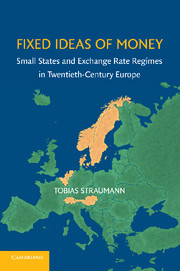Book contents
Two - The Return to Prewar Parity
Published online by Cambridge University Press: 06 July 2010
Summary
Another piece of evidence proving that policymakers in small neutral states failed to grasp the policy options opened up by suspension of the gold standard is Denmark's and Norway's determination to bring their currencies back to the prewar level. Owing to a particularly severe banking crisis that prompted central banks to stop the deflationary course required to appreciate the currency, the Danish krone and the Norwegian krone fell to a level 40 to 50 percent below the dollar in 1924. And yet, despite this renewed weakness, Denmark and Norway restored the gold standard at prewar parity – Denmark in January 1927 and Norway in May 1928 (Figure 2.1).
What were the deeper reasons behind this policy that from today's viewpoint contradicts any sound economic reasoning? There is a strong consensus among economic historians that the overwhelming majority of policymakers and voters sincerely believed that economic stability could be achieved only by restoring the old monetary order. Deflation was not seen as an unnecessary burden for the economy but as an appropriate way to correct previous distortions. Going back to the prewar parity was seen as the final step in overcoming the chaotic postwar period and reinstalling the favorable conditions of the gold era before World War I. Moral arguments played an important part in this reasoning because most politicians wanted their “old, honest crown” back.
- Type
- Chapter
- Information
- Fixed Ideas of MoneySmall States and Exchange Rate Regimes in Twentieth-Century Europe, pp. 61 - 93Publisher: Cambridge University PressPrint publication year: 2010



